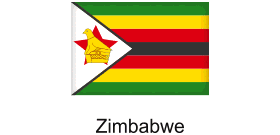 December at Victoria Falls: Rainy Season Brings New Thrills and Lush Wilderness
December at Victoria Falls: Rainy Season Brings New Thrills and Lush Wilderness
Straddling the boundary between Zimbabwe and Zambia, Victoria Falls—or Mosi-oa-Tunya, the “Smoke that Thunders”—continues to captivate visitors as one of Africa’s most iconic natural spectacles. As December arrives, the region ushers in the early rains, injecting new life into the mighty Zambezi River and transforming the surrounding terrain into a vibrant, green paradise. For African travel professionals, this month represents a unique window to showcase the Falls’ dynamic energy and diverse adventures to clients seeking both excitement and serenity at the continent’s edge.
December’s climatic shift marks a renewal for the area. The onset of the rainy season delivers warm, often humid days, with frequent afternoon showers that freshen the air and recharge the Zambezi’s flow. Daytime temperatures generally hover between 20°C and 32°C, creating comfortable conditions for exploration. While the Zambezi is still regaining its strength after the drier months, the water levels begin to climb, setting the stage for spectacular scenes without the overpowering mist that shrouds the Falls during peak flow in March through May.
This balance—rivers swelling but not yet overwhelming—means that December visitors enjoy exceptional visibility. The famous rock formations and dramatic gorges remain clear to the eye, offering unobstructed views. Meanwhile, the rainforest that hugs the Falls bursts into radiant green, with intense sunlight and dramatic cloudscapes creating photographic opportunities, especially at dawn and dusk. These visual spectacles are a boon for those seeking to capture the unique beauty of Victoria Falls during a less-crowded, transitional period.
For adventure lovers, December at Victoria Falls is anything but quiet. On the Zimbabwean side, guests can embark on guided explorations of the Falls’ many trails, take exhilarating helicopter flights for sweeping panoramas, or test their courage with bungee jumping and white-water rafting—activities that depend on river conditions but often remain accessible early in the wet season. The Zambian side adds its own thrill, with the legendary Devil’s Pool sometimes open at the month’s start. Here, daring swimmers can edge to the very brink of the waterfall, an experience that remains one of the world’s most breathtaking natural encounters.
Wildlife viewing also thrives in December. The lush, rain-fed vegetation of Mosi-oa-Tunya National Park (Zambia) and Zambezi National Park (Zimbabwe) attracts elephants, buffalo, hippos, and a host of other animals. It’s a rewarding time for birdwatchers as well, since migratory species flock to the area after the first rains, adding flashes of colour and song to the bush. The rejuvenated landscape creates a haven for both seasoned safari-goers and first-time adventurers, with plenty of opportunities to spot Africa’s famed wildlife in a setting refreshed by seasonal change.
For those planning trips during December, a few practical considerations are key. Lightweight, breathable clothing is best for warm, humid days, but a light rain jacket is essential for sudden tropical downpours. Accommodations fill up quickly over the festive season, so advance booking is strongly advised. Given the rainy conditions, mosquito activity rises—making insect repellent a must. Currency needs are straightforward: the US dollar is widely accepted across the Zimbabwean side, while the Zambian kwacha is the standard in Zambia. For photographers, early mornings and late afternoons deliver optimal lighting and smaller crowds at the Falls’ prime vantage points.
One of the most significant developments for cross-border travel in the region is the KAZA Univisa (Kavango Zambezi Trans-Frontier Conservation Area Visa). This multiple-entry visa simplifies journeys between Zimbabwe and Zambia and even allows for day trips into Botswana via the Kazungula border. Valid for up to 30 days, the KAZA Univisa is designed to support seamless exploration of the Falls and surrounding safari areas—an appealing option for clients eager to experience the best of three countries in one trip.
The KAZA Univisa can be obtained on arrival at key entry points such as Victoria Falls International Airport (VFA), Harry Mwaanga Nkumbula International Airport (LVI) in Livingstone, and the Kazungula border post, among others. It costs US\$50 and accepts both cash and card (depending on location). Travellers need a passport valid for at least six months and enough blank pages for stamps. With this visa, visitors enjoy unlimited crossings between Zimbabwe and Zambia during its validity, plus the benefit of a one-day excursion into Botswana—making it a true asset for those seeking to maximise their time in Southern Africa’s adventure capital.
For African travel sector professionals, December at Victoria Falls presents a moment to highlight the destination’s year-round appeal. The combination of rising river energy, lush landscapes, and rich wildlife encounters—together with streamlined cross-border movement—creates compelling reasons for clients to consider the region outside the traditional peak months. Emphasising the blend of adventure, nature, and convenience can help operators tap into evolving traveller preferences, attract experience-driven visitors, and strengthen their role in Southern Africa’s flourishing tourism ecosystem.
With its renewed rivers, verdant forests, and pulse of adventure, Victoria Falls in December is more than just a seasonal spectacle—it is an invitation to rediscover Africa’s wild heart in a time of transformation. Those ready to embrace the rains and the promise of new beginnings will find the Smoke that Thunders at its most vibrant, welcoming, and alive.
